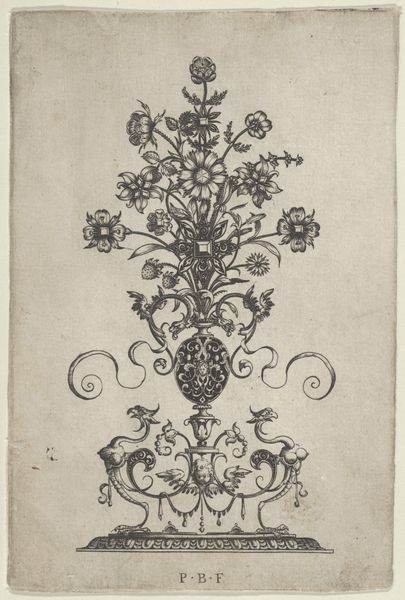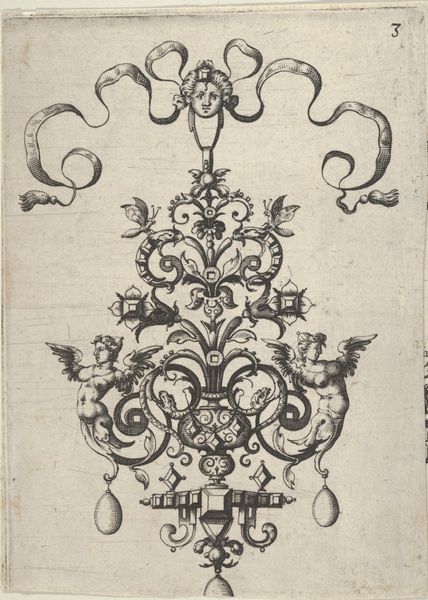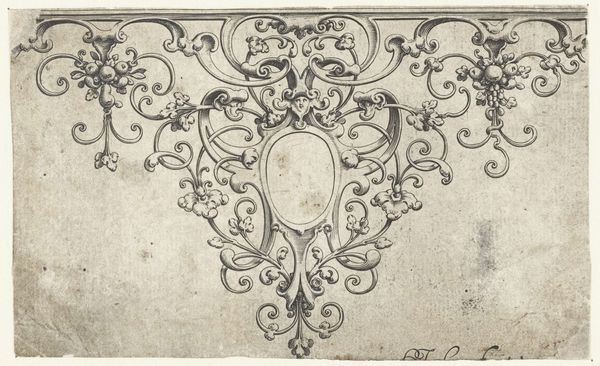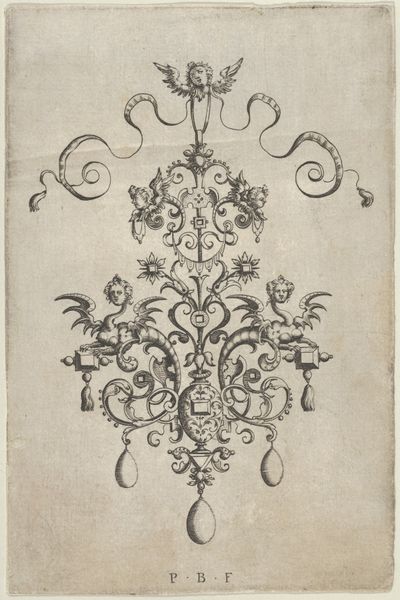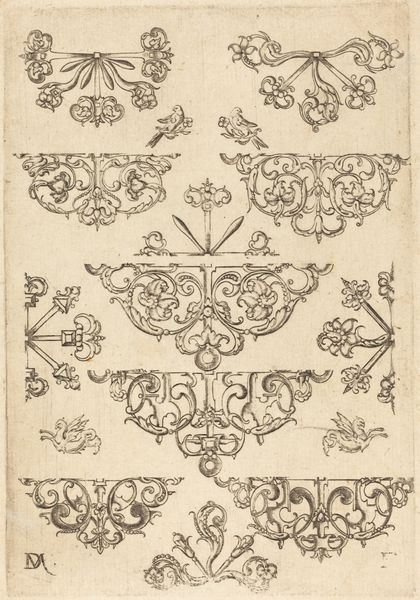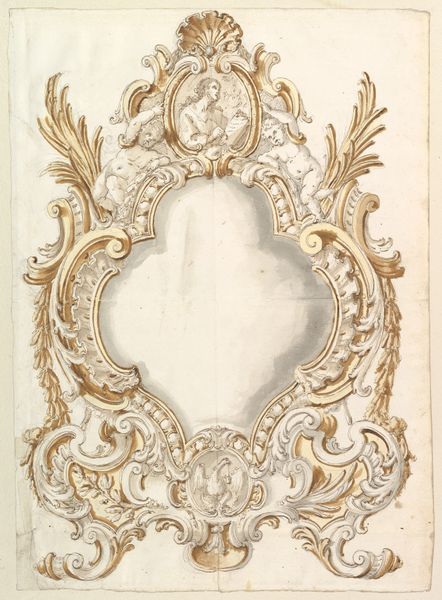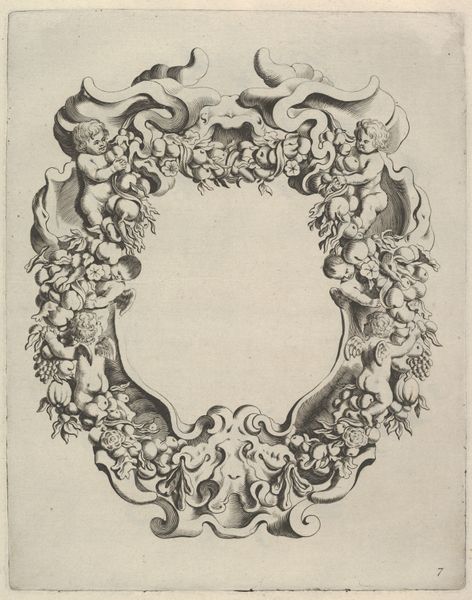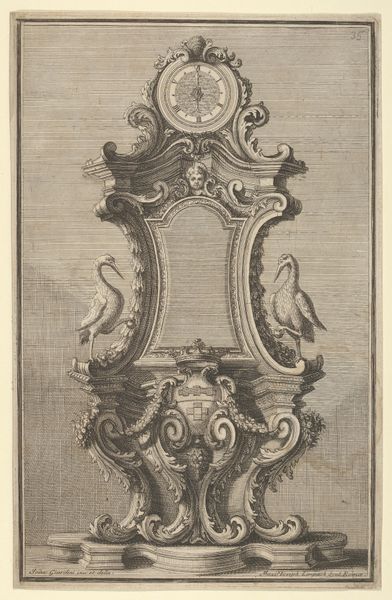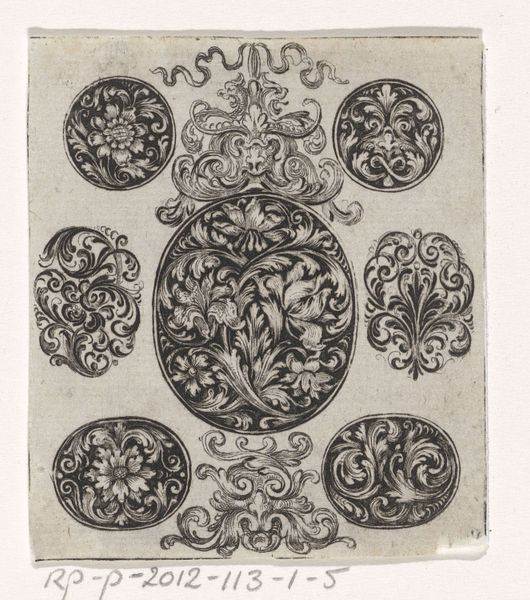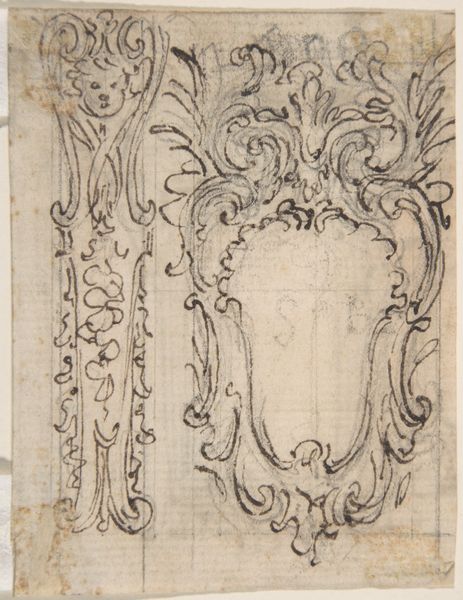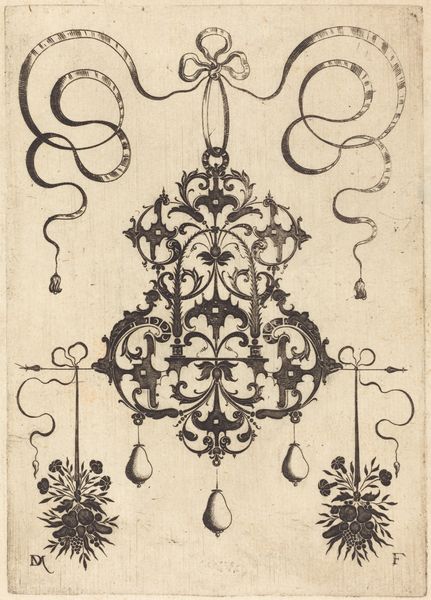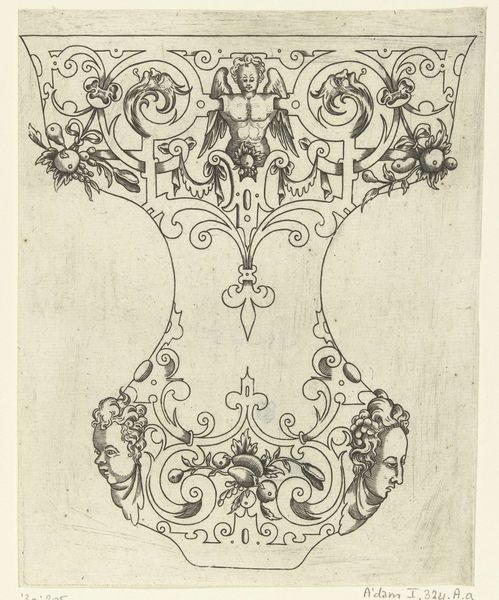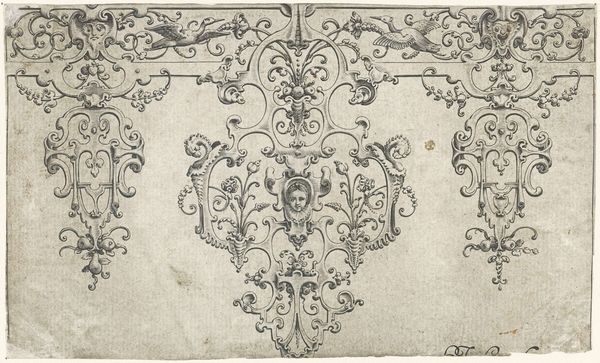
drawing, print, paper, ink
#
drawing
#
baroque
# print
#
paper
#
ink
#
history-painting
#
decorative-art
Dimensions: sheet: 12 3/8 x 8 9/16 in. (31.4 x 21.8 cm)
Copyright: Public Domain
Curator: This drawing, likely dating to the 17th or 18th century, is entitled “Carriage Design.” It’s currently held in the collection of the Metropolitan Museum of Art. Anonymous is credited with this work, done in ink on paper. Editor: Whoa, even though it's a design, it’s so flamboyant! It looks almost overgrown, those swirling leafy details feel positively ecstatic. I can practically hear the creak of leather and the clip-clop of horses’ hooves… it’s dramatic! Curator: Definitely dramatic, very baroque, very decorative-art oriented. The material and the process offer a key. Looking at the quick, expressive lines, I wonder about the workshop this piece comes from, who commissioned this drawing and what the economic value of such carriages was. The ink lines imply rapid prototyping, the means of efficiently communicating designs to artisans. Editor: Ah, now I'm picturing not just the carriage itself, but the social context surrounding it. You can practically taste the aspirations of that era, this hunger for opulence...it speaks to that social stratification of the time. I wonder what kind of person would’ve even *dared* to ride in this fabulous conveyance. What anxieties or secret desires were attached to these luxurious commodities? Curator: Right, and look at how even in monochrome ink, Anonymous captures the essence of status. But the anonymous aspect makes me ponder the contribution of often nameless laborers. It encourages us to interrogate this production: where did these materials come from, and who had access to them? The print reproduction implies accessibility of some kind. It democratizes design, disseminating inspiration among varied artists or craftspeople who themselves might lack patronage. Editor: Mmm, this piece dances on a line, doesn't it? Ostensibly practical in purpose, to showcase a carriage design, it rises far beyond its utilitarian function. Look at how that ornamental language suggests aspirations way beyond simple transportation, embodying a sense of grandeur. It asks, What is transportation *really* about if not expressing who you think you are? Curator: Indeed. Analyzing the labor relationships encoded in these material objects and design elements helps us comprehend their lasting allure. It reminds us of art's crucial ties to labor, culture, and economics in all historical periods. Editor: You're right. Now I'm thinking that beyond just aestheticizing luxury, maybe there's an attempt to mythologize, even ennoble the mundane act of getting from point A to B. Fascinating!
Comments
No comments
Be the first to comment and join the conversation on the ultimate creative platform.
